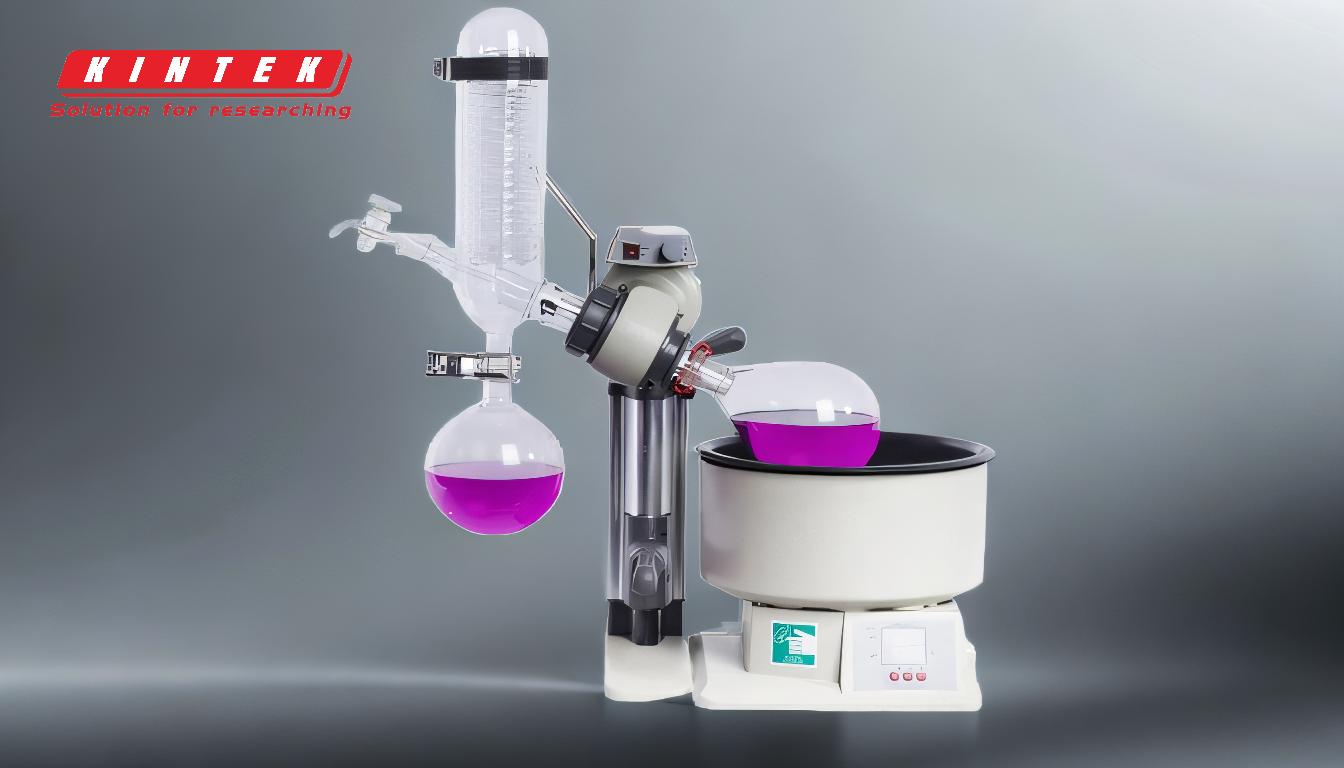Rotary evaporation is a widely used technique in laboratories for the efficient separation and purification of compounds, particularly in fields such as chemistry, pharmaceuticals, biotechnology, and environmental science. It operates under reduced pressure to lower the boiling point of solvents, enabling the gentle removal of volatile solvents from mixtures without degrading heat-sensitive compounds. Common applications include the concentration of solutions, crystallization, solvent recovery, chemical synthesis, and the extraction of essential oils. Rotary evaporators are essential tools for tasks like sample preparation, purification, and solvent recycling, making them indispensable in research, development, and quality control processes.
Key Points Explained:

-
Concentration of Solutions and Suspensions:
- Rotary evaporation is frequently used to concentrate solutions or suspensions by removing excess solvent. This is particularly useful in pharmaceutical and biological research, where reducing the volume of a sample is necessary for further analysis or processing.
- The process involves rotating the sample flask to increase the surface area for evaporation, while a vacuum lowers the boiling point of the solvent, allowing it to evaporate at lower temperatures.
-
Crystallization or Recrystallization:
- Rotary evaporators are employed to facilitate crystallization or recrystallization processes. By removing solvents, the concentration of the solute increases, leading to the formation of crystals.
- This is crucial in the purification of chemical compounds, where obtaining pure crystalline forms is often required for further use or analysis.
-
Solvent Distillation and Recycling:
- One of the primary uses of rotary evaporation is the distillation and recovery of solvents. This is especially important in industries where solvent reuse is economically and environmentally beneficial.
- The process separates solvents from mixtures, allowing them to be collected and reused, reducing waste and costs.
-
Chemical Synthesis:
- In chemical synthesis, rotary evaporators are used to remove solvents from reaction mixtures, isolate products, or concentrate intermediates. This is essential for purifying compounds and preparing them for subsequent reactions or analyses.
- The gentle evaporation process ensures that heat-sensitive compounds are not degraded during solvent removal.
-
Extraction of Essential Oils and Plant Extracts:
- Rotary evaporation is widely used in the extraction of essential oils and bioactive compounds from natural products. The technique allows for the efficient separation of volatile oils from plant materials without damaging their chemical structure.
- This application is particularly important in the food, cosmetic, and pharmaceutical industries.
-
Purification of Samples:
- Rotary evaporators are used to purify samples by removing impurities or unwanted solvents. This is critical in fields like drug development, where the purity of compounds is paramount.
- The process is also used to prepare samples for further analytical techniques, such as chromatography or spectroscopy.
-
Environmental and Food Safety Testing:
- In environmental and food safety testing, rotary evaporation is used to concentrate samples for the detection of trace contaminants or analytes. This enhances the sensitivity of analytical methods, ensuring accurate results.
- For example, it is used to concentrate pesticide residues in food or environmental pollutants in water samples.
-
Separation of Complex Mixtures:
- Rotary evaporation is effective in separating solvents from organic, inorganic, and polymeric materials. It is particularly useful when the desired compound has a lower boiling point than the solvent and does not form an azeotrope with it.
- This makes it a versatile tool for handling a wide range of materials in research and industrial applications.
-
Active Ingredient Development:
- In pharmaceutical and biotechnology research, rotary evaporation is used to develop and extract active ingredients from raw materials. This is a critical step in drug discovery and formulation.
- The technique ensures that the active compounds are isolated efficiently and in a form suitable for further testing or production.
-
Sample Preparation for Analysis:
- Rotary evaporators are often used to prepare samples for analytical techniques such as HPLC, GC-MS, or NMR. By concentrating or purifying samples, they improve the accuracy and reliability of analytical results.
- This is essential in quality control and research applications across multiple industries.
In summary, rotary evaporation is a versatile and essential technique in modern laboratories, enabling efficient solvent removal, purification, and concentration of samples. Its applications span across various fields, including chemistry, pharmaceuticals, biotechnology, and environmental science, making it a cornerstone of research and industrial processes.
Summary Table:
| Application | Key Benefit |
|---|---|
| Concentration of Solutions | Reduces sample volume for analysis or processing |
| Crystallization | Purifies compounds by forming crystals |
| Solvent Distillation & Recycling | Recovers solvents for reuse, reducing waste and costs |
| Chemical Synthesis | Isolates products and intermediates without degrading heat-sensitive compounds |
| Essential Oil Extraction | Separates volatile oils from plant materials |
| Sample Purification | Removes impurities for accurate analytical results |
| Environmental & Food Testing | Concentrates samples for trace contaminant detection |
| Complex Mixture Separation | Handles organic, inorganic, and polymeric materials |
| Active Ingredient Development | Isolates active compounds for drug discovery and formulation |
| Sample Preparation for Analysis | Prepares samples for HPLC, GC-MS, NMR, and other techniques |
Discover how rotary evaporation can streamline your lab processes—contact our experts today!










